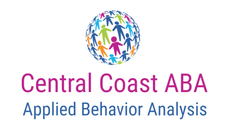
Hello everyone and Happy Spring! 2022 is flying right by us, and before you know it, the kids will be on summer break, the weather will be warmer and the days longer. In this blog post, we wanted to shed some light on modifiable activities to experiment and have fun with all while strengthening or learning new skills! These can be especially helpful for kids with autism and other related diagnoses. Take a look below at some of the activities and games our BCBAs have curated to try out with your family!
Uno: Matching Skills: If your child is working on matching skills, give them one card at a time that is face up. Keep the deck face down and have them draw one card from the deck at a time until they find a color match. Ignore the numbers, they’re not important for this modification. Remove wild or special cards. Number Skills: Same as above, but with numbers. Colors are not important for this modification. Sharing Skills: Same as above, but take turns drawing the card from the deck. Remember to give praise when either of you find a match! Complicated Instructions: Play traditional Uno with 3-5 cards in hand. Cards in hand can be face up (for adult assistance if needed) and wild/special cards can be removed from the deck. Remember to give praise when either of you win! Sustained Attention: Play traditional Uno and keep increasing the hand size. Start with 3 cards in hand, then 4, 5, etc. until the child can get through a whole game with 7 cards to start. Taking Turns: Add in more people! Let caregivers, siblings, and friends join in on the fun! Give praise to everyone for playing a fun and friendly game. Advanced/Movement Uno: Have the child assign a movement to each color of card (red, yellow, green, and blue). When they put down a card of that color, everyone does that exercise the number of times on the card.
Start-to-Finish Board Games: For this section, you’ll need games that have a starting place, a trail to follow, and an end. Some good examples of these are: Hoot Owl Hoot, Candyland, Chutes and Ladders, a Treasure Map, Trouble, etc. Dice: If you’re worried about dice ending up in the child’s mouth, cut up paper to make cards. You can just have six cards labeled 1 through 6, or even fewer cards (1 through 3) depending on the child. Cards can also be by color (like Candyland) if appropriate for the board. Matching Skills: Let them draw one colored card at a time and help them move their piece to the corresponding space until they reach the finish line. Remove any special cards from the deck. Counting: Use numbered cards or dice for movement and help them count to their next location. Sharing Skills: Take turns drawing/rolling and moving your token. Include as many people as you’d like! Complicated Instructions: Include special cards! DIY Board Game: Help the child draw their own board game! You just need a squiggly line, a starting point, and a finish line. Add in some decorations, make cards to draw or get dice to roll, and enjoy a homemade board game! Origami, Paper, and Other Crafts: Easy Crafts:
Intermediate Crafts:
Advanced Crafts:
What do you think of our list? We hope you use these or take some inspiration to make different modifications to games and activities to fit your child's and family’s needs. Let us know if you’re going to try any of these or what you already do with your family to have some fun! Was this information helpful? Please share your thoughts, experiences, and feedback with us. You can find us on Facebook, Instagram and LinkedIn @centralcoastaba.
0 Comments
Leave a Reply. |
AuthorOur Board Certified Behavior Analysts (BCBAs) are dedicated to sharing their expertise on topics that are important to you. Archives
January 2024
Categories |

 RSS Feed
RSS Feed
